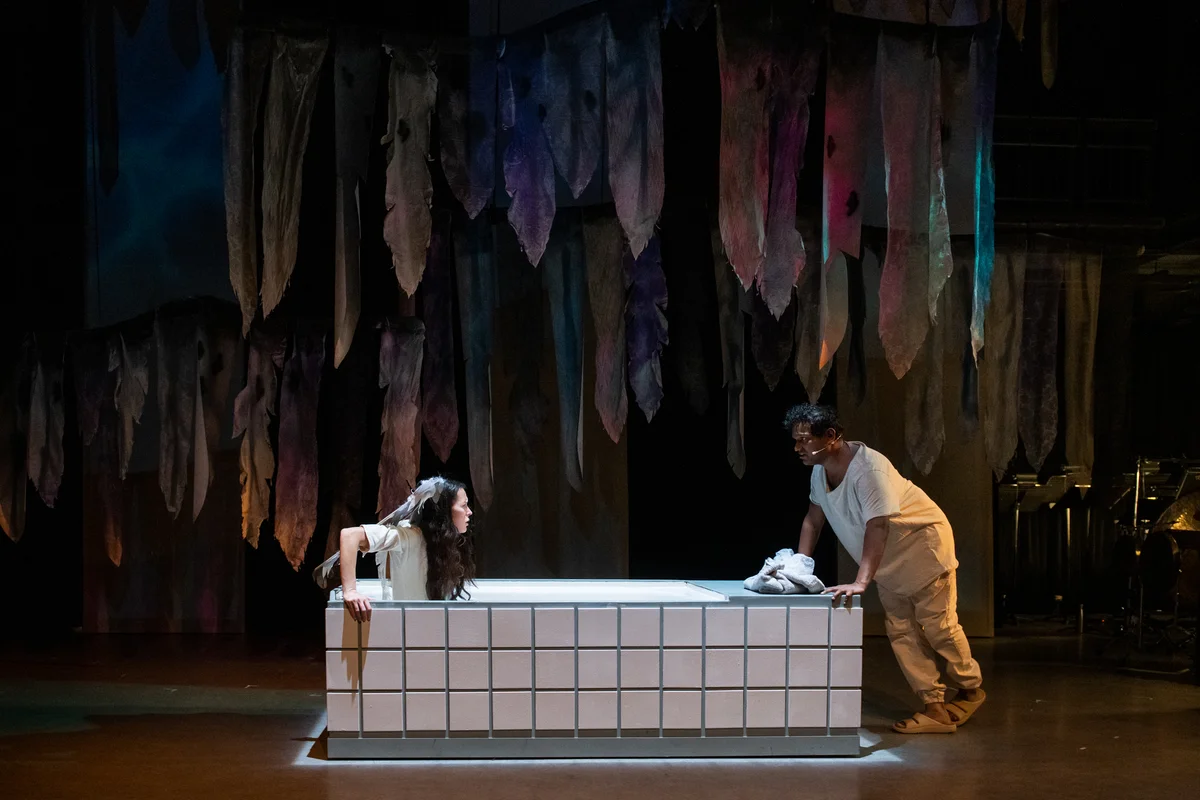
This article discusses human trafficking and sexual assault.
When I entered the Annex, a theatre downtown, to see the critically-acclaimed opera Angel's Bone I got a bit overwhelmed by the amount of people wearing fancy clothes. I hid in my thrifted coat.
I glanced at the program I was given before entering. Content warning: This piece depicts the trafficking and sexual exploitation of children and youth and therefore presents situations of sexual assault, violence, sexism, misogyny, and death.
By reading the rest of the program I got a better idea of what I was about to experience. The plot revolves around a toxic couple of abusers, Mr. XE (Alexander Dobson) and Mrs. XE (Alyssa Samson), one of whom is also a victim of sex trafficking. They try to solve their marital and financial crises by recruiting two new youth, termed the ‘angels’ (played by Winona Myles and Asitha Tennekoon), to financially and sexually exploit.
The opera, which ran from November 25 to 27 in a brief Canadian premier, addresses how trauma can lead victims to become perpetrators.
A week before the premier, director Alan Corbishley (UBC BFA ‘98) described the show in an interview with The Ubyssey as “ a very challenging piece of music. It’s challenging both in its subject matter, and in its performance — the show integrates "different types of genre and style and compositions, such as jazz, some punk-inspired moments, modern music, standard chant, [and] contemporary classical music.”
The Angel’s Bone crew had to ensure their portrayal of topics such as pedophilia, misogyny and murder were effective but delicate due to their violent nature and serious real-world impacts.
Corbishley said that Angel’s Bone’s crew included a social context committee of lawyers, survivors of human trafficking, support services and youth advocates “to make sure that what we are doing is socially conscious, ethical and informed, and connected to authentic communities that are represented.” They also put together a resource toolkit for the performers to study, which is also available online for audience members.
There was a pre-talk before the opera started, in which speaker Turiya Wild Rose shared her own human trafficking story. Her story was harrowing and powerful, and I was grateful to her for sharing. It helped ground the show ahead of us in reality. I turned off my phone, and the opera started.
An intense wave of stimulus passed before my eyes: Victims, angels, punk, shouting, pictures, bathtub, bed, television, alcohol, perpetrators, power shift.
Beautiful voices.
Rape, murder, impunity.
Pain, so much pain.
There was a post-Q&A after the opera, but it was already late, and I needed to catch the bus back home — or at least that’s what I told myself. In reality, it was because of how I had been reminded of the evil that exists in the world. Of how vulnerable I actually was, wandering alone at night in the big city.
Some people may say that Angel’s Bone's message may be missed in an art form considered to be “elitist.” I did feel out of place when I entered the theatre, and I even hid in the bathroom to calm my social anxiety down.
However, in Corbishley’s words, “the genre is really moving away from just entertainment, not that it ever was [just entertainment, but] it's really trying to make an impact on the community.” Corbishly said that by starting conversations that centre impacted communities and by raising awareness, Angel’s Bone could go beyond the stage.
I have mixed thoughts about this. On one hand, isn’t the first step for opera to become less “elitist” to portray diverse social struggles? Angel’s Bone tackled the difficult task of representing traumatic human experiences that many others may have been too scared to do so.
But, on the other hand, was Angel’s Bone production really the ideal way to educate and provoke empathy in the community against human trafficking? After the show I could more deeply sympathize with victims and understand the magnitude of the problem, but I couldn’t tell what was expected of me or the rest of the audience to do after the opera to combat human trafficking. What is the point of provoking conversations, if they do not provide pathways towards justice?
Real-world effectiveness aside, it succeeded at provoking a complicated mix of awe at the production's artistry and deep discomfort.
As Corbishley said, “[human trafficking] is not something you should feel comfortable with.”

